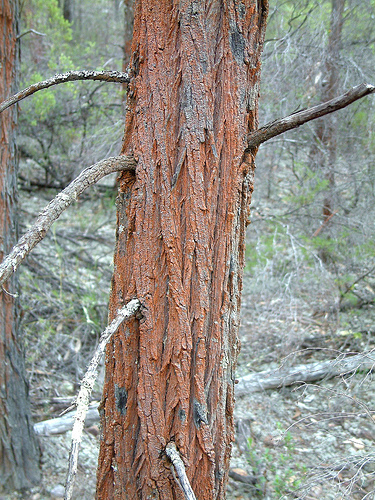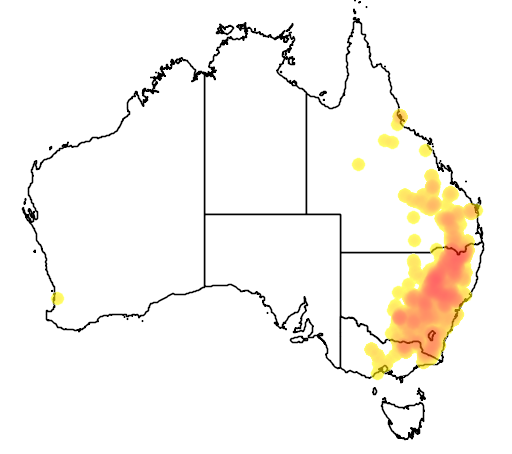Description
Common names
Black Cypress Pine, Black Cypress, Black Pine, Black Callitris, Woronora Plateau Population, Red Cypress, Black Cypress-pine, Mountain Pine, Murray Pine, Red Cypress Pine, Red Cypress-pine, Red Cypress., Red Pine, Scrub Pine.
Scientific names
Callitris endlicheri, Callitris calcarata.
Family
Cupressaceae.
Genus
Callitris.
Name origin
Endlicheri, after S.L. Endlicher (1805-1849), Viennese botanist.
Rainfall
500-750mm.
Growth rate
Slow.
Presence in Australia
Quite common across entire area, becoming less so to the west. Not noted in areas west of Bowna-Jindera and Walla Walla districts.
This specie has been identified in the following Australian states: Qld, NSW, ACT, Vic, WA.
Habitat
Generally stony hills and ridges.
Habit
Tree with mostly erect and sometimes spreading branches and mostly dark green foliage. Deeply furrowed tough bark.
Similar species
Distinguished from White Cypress Pine (C. glaucophylla) by its cones and generally greener foliage, compared to the generally grey-blue foliage of White Cypress Pine.
Site preference
Well-drained soil. Tolerates frost (including temperatures to -80C) and poor soils. Moderately drought resistant.
Characteristics
Hardy. Young plants are susceptible to grass fires. Larger trees not seriously affected by grass fires although may die from hot fires.
Seed collection
Early Dec to late Jun. Monitor closely, as seeds released 3-8 weeks after maturity. Store seeds at 3-50C in airtight container.
Propagation
From seed (±281 viable seeds per gram), sown around Oct, as germination and seedling growth slow. Optimum germination temperature is ±200C.
Regeneration
From seed after fire or other soil disturbance.
Shade and shelter
Excellent medium-level cover in windbreaks. Useful shelter as foliage maintained to near ground-level.
Land protection
Useful for catchment protection and erosion control.
Fuel
Suitable. High calorific value per unit weight.
Timber
Comparable to White Cypress Pine (Callitris glaucophylla), although not durable. Sapwood pale yellow and heartwood brown. Fine-textured and straight-grained, except around the many knots. Termite resistant. Air density about 710 kg/m3. Sapwood and heartwood difficult to impregnate with preservatives. Requires slow initial drying to avoid surface checking. While works well, it splits easily, and pre-boring for nails is necessary. Used for fencing, small poles, flooring, indoor furnishing, paneling, coachwork furniture and general construction. Bark yields about 30% tannin.
Wildlife
Seeds eaten by parrots and cockatoos. Foliage good refuge for small birds. Deep fibrous bark habitat for grubs and other insects, which are food for birds. Excellent habitat for thornbills.
Ornamental
Attractive specimen for gardens, parks and avenues.
Other
Resinous exudate from cut trunk sold overseas as "Australian sandarac" in varnishes. Antihelmintic for horses (drug which destroys or expels intestinal worms). Twigs used with fodder for this purpose.


